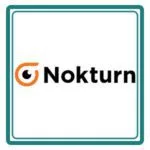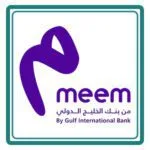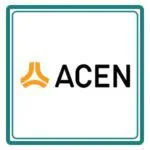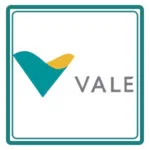How to Pass ISO 31000 Like a Pro: Tips for Risk Management in High-Risk Industries

ISO 31000 is an international standard that has been adopted globally to manage the risks, which aims to provide companies a well-defined and well-organized method for identifying, assessing, and managing risks. For the companies with a higher risk of losing, like healthcare, construction, and finance, the careful management of the risks involved is the most important part of risk management. ISO 31000 certification is not only a boost to risk management, but also a way to improve operations, compliance, and resilience. In this blog, we will emphasize ISO 31000’s important features, as well as how it helps to reduce the risks, and what steps you can take throughout the certification process to succeed in your organization.
Why is ISO 31000 Important for Businesses?
ISO 31000 is designed to help organizations manage risks systematically. Its primary purpose is to provide a universal framework for identifying, assessing, and treating risks that could impact business objectives. By adhering to ISO 31000, organizations can anticipate potential challenges, improve decision-making processes, ensure business continuity, and build a culture of risk awareness. The standard is flexible and adaptable, making it suitable for organizations of all sizes and industries.
ISO 31000: A Methodology for Effective Risk Management
ISO 31000 is helpful to companies in that it provides a full risk management process. A series of a few basic steps designed for companies to choose from in performing activities, such as recognition, assessment, handling, and supervision of risks that occur in the course of their operations undergoes this methodology.
The methodology focuses on several key stages:
- Risk Identification: Identifying potential risks that could impact the organization’s objectives.
- Risk Assessment: Analyzing the likelihood and consequences of each identified risk to determine its severity.
- Risk Treatment: Developing and implementing strategies to mitigate or manage the identified risks, including avoiding, reducing, or transferring them.
- Monitoring and Review: Regularly reviewing the effectiveness of risk management actions and making adjustments when necessary.
This methodology ensures that risk management is integrated into the organization’s daily operations, improving its overall resilience and ability to adapt to changing circumstances.
Types Of Certification
- ISO Certification
- ISO 9001 Certification
- ISO 14001 Certification
- ISO 45001 Certification
- ISO 22000 Certification
- ISO 27001 Certification
- ISO 17025 Certification
- ISO 13485 Certification
- ISO 20000-1 Certification
- ISO 22301 Certification
- ISO 50001 Certification
- ISO 37001 Certification
- IATF 16949 Certification
- ISO 29001 Certification
- ISO 31000 Certification
- ISO 20121 Certification
- ISO 10002 Certification
- ISO 41001 Certification
Get Free Consultation
Our Clients


















What Does ISO 31000 Define as Risk, and How Is Risk Managed?
In ISO 31000, risk is defined as the effect of uncertainty on the achievement of an organization’s objectives. This uncertainty can be positive or negative and may arise from internal or external factors. A risk could be anything from financial instability to a natural disaster, technological failure, or even an opportunity that needs to be seized.
Risk management, as outlined in ISO 31000, refers to the coordinated activities that organizations undertake to direct and control risks. The goal is to maximize opportunities while minimizing the potential negative impacts. ISO 31000 encourages a balanced approach to risk, allowing organizations to not only protect themselves from threats but also strategically exploit opportunities to their advantage.
ISO 31000: Practical Risk Management Implementation
Secure Top‑Management Buy‑In
Leadership must actively support risk management, allocate resources, and integrate it into core decision-making.
Customize the Framework
Tailor the risk management approach to fit your organization’s context—avoid generic, one-size-fits-all solutions.
Maintain Clear Documentation
Keep concise, accurate records of risk assessments, decisions, and treatment plans to demonstrate compliance.
Invest in Training & Awareness
Educate all relevant staff continuously to build a risk-aware culture and support ongoing implementation.
Embrace Continuous Improvement
Treat ISO 31000 as a living system—regularly review, update, and refine processes to adapt to evolving risks.
Which Industries Need ISO 31000 Certification?
ISO 31000 certification is essential for organizations seeking a structured approach to risk management, particularly in high-risk industries where poor risk management can have severe consequences. Key sectors that benefit include:
- Healthcare: Manages risks related to patient safety, regulatory compliance, and operational disruptions.
- Construction: Addresses safety hazards, project delays, and financial risks.
- Aviation: Ensures compliance with safety and security regulations.
- Finance: Mitigates risks from market fluctuations, fraud, and regulatory changes.
- Manufacturing: Reduces supply chain risks and improves product quality.
- Energy: Manages environmental, operational, and compliance risks in energy production.
- Information Technology: Protects against cybersecurity threats and system failures.
The 8 Guiding Principles of ISO 31000 Risk Management
- Integration into Organizational Processes: Risk management must be a part of the organization's overall governance and decision-making
- Structured and Comprehensive Approach: A systematic process is essential for identifying, assessing, and managing risks at every level of the organization.
- Customization: The risk management process should be tailored to meet the specific needs and context of the organization.
- Stakeholder Engagement: Involving stakeholders ensures a comprehensive understanding of risks and encourages transparency in decision-making.
- Dynamic Process: Risk management must be adaptable to changing circumstances, whether due to internal changes or external factors.
- Consideration of Human and Cultural Factors: Acknowledging the role of human behavior and organizational culture in managing risks.
- Continuous Improvement: Risk management is an ongoing process that requires regular reviews and improvements to remain effective over time.
Why ISO 31000 is Crucial for High-Risk Industries
In industries like construction, healthcare, aviation, and finance, where the consequences of risk are significant, implementing ISO 31000 provides several advantages:
- Improved Risk Awareness: ISO 31000 helps organizations develop a risk-aware culture, ensuring that employees at all levels understand the importance of risk management.
- Enhanced Decision-Making: A structured risk management process enables better decision-making by providing a clear understanding of potential risks and their impacts.
- Operational Resilience: By identifying and addressing risks proactively, organizations can mitigate potential disruptions and remain resilient in the face of adversity.
- Regulatory Compliance: Many high-risk industries are subject to regulatory requirements. ISO 31000 can help organizations meet these requirements and avoid legal and financial penalties.
- Cost-Effective: By managing risks effectively, organizations can reduce unexpected costs caused by unmitigated risks, improving their bottom line.
How PopularCert Consultants Can Help You to ISO 31000 Certification
PopularCert, a leading ISO certification provider, offers expert guidance to help organizations achieve ISO 31000 certification. Their services include gap analysis to identify areas for improvement, training to equip teams with the necessary knowledge, and documentation assistance to create policies and procedures. Internal audits ensure compliance with ISO 31000 standards, and certification support guides organizations through the process with third-party auditors. contact us for free consultation
GET A FREE CONSULTATION NOW
FAQ
What industries can benefit from ISO 31000?
ISO 31000 is applicable across all industries, but it is particularly beneficial for high-risk sectors such as healthcare, aviation, construction, and finance.
How long does it take to implement ISO 31000?
The time required to implement ISO 31000 varies based on the organization’s size and complexity. On average, it can take several months to fully integrate the standard.
Is ISO 31000 certification mandatory?
ISO 31000 certification is voluntary but highly recommended for organizations seeking to enhance their risk management practices and improve operational efficiency.
